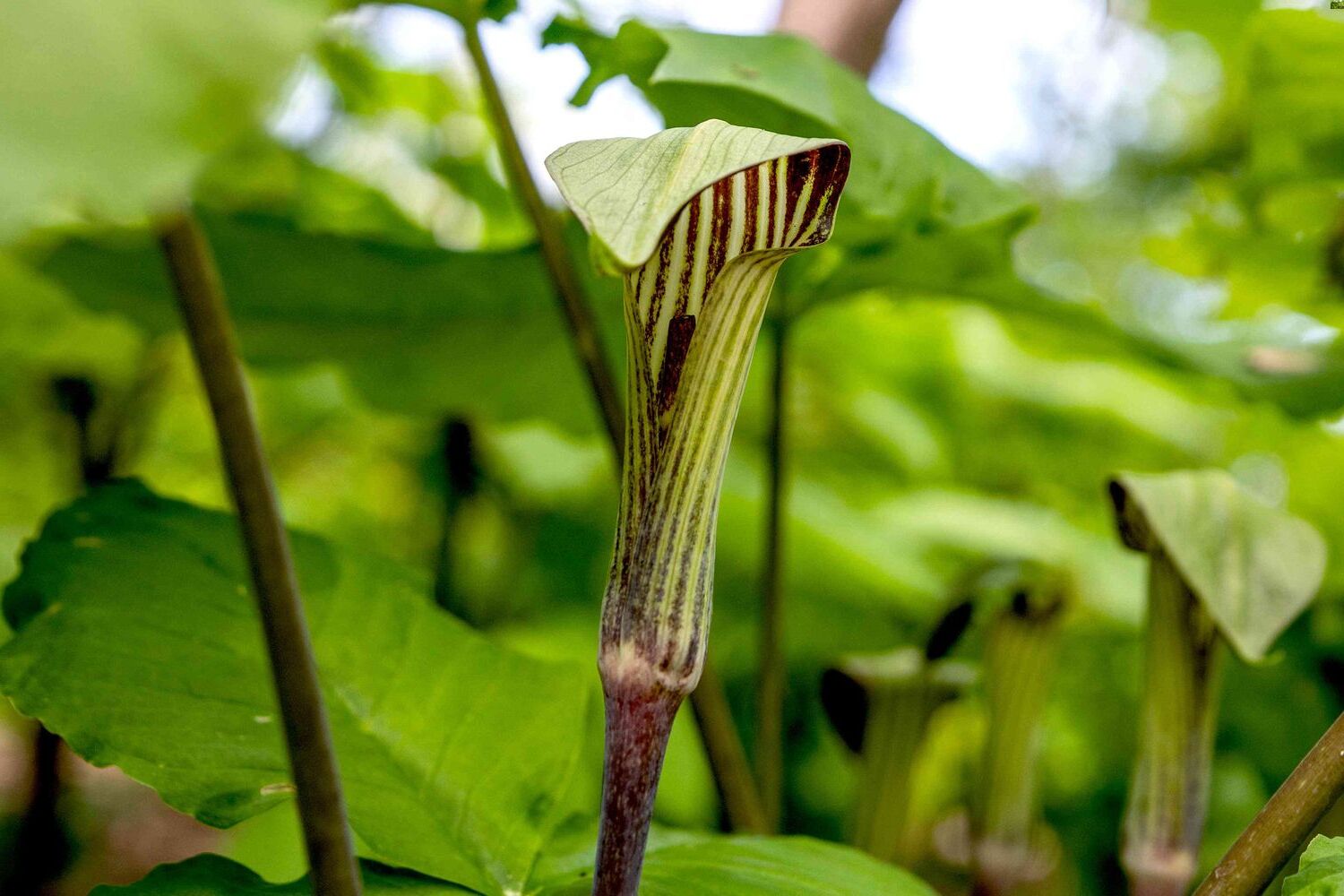
Jack-in-the-pulpit is a fascinating plant with a unique appearance and intriguing history. Found primarily in North America, this perennial herb stands out with its distinctive hooded flower, which resembles a preacher in a pulpit. Did you know that this plant has both male and female forms, and can switch genders based on environmental conditions? Jack-in-the-pulpit also has a rich cultural significance, being used by Native Americans for various purposes, including food and medicine. However, caution is needed as the plant contains calcium oxalate crystals, which can cause irritation if not prepared correctly. Curious about more intriguing facts? Let's dive into 34 amazing tidbits about this remarkable plant!
What is Jack-in-the-pulpit?
Jack-in-the-pulpit is a unique plant native to North America. Known for its distinctive appearance, this plant has intrigued botanists and nature enthusiasts alike. Let's dive into some fascinating facts about this remarkable plant.
-
Jack-in-the-pulpit belongs to the Araceae family, which includes other well-known plants like the peace lily and philodendron.
-
The plant gets its name from its flower structure, which resembles a preacher (Jack) standing in a pulpit.
-
Jack-in-the-pulpit is also known by its scientific name, Arisaema triphyllum.
-
The plant has a unique flower structure called a spadix, which is enclosed by a hood-like spathe.
-
Jack-in-the-pulpit can grow up to 2 feet tall, making it quite noticeable in the wild.
Habitat and Distribution
Understanding where Jack-in-the-pulpit thrives can give us more insight into its ecological preferences.
-
This plant is commonly found in moist, deciduous forests across eastern North America.
-
It prefers shady areas with rich, well-drained soil.
-
Jack-in-the-pulpit can also be found in wetlands and along stream banks.
-
The plant is hardy in USDA zones 4-9, making it adaptable to a range of climates.
-
Jack-in-the-pulpit often grows in colonies, which can create a striking visual effect in the forest understory.
Unique Features
Jack-in-the-pulpit has several unique features that set it apart from other plants.
-
The plant has three-part leaves, which is reflected in its species name, triphyllum.
-
Jack-in-the-pulpit can change its sex from year to year, depending on environmental conditions.
-
In its first few years, the plant is usually male, but it can become female as it matures and gains more resources.
-
The plant produces bright red berries in the fall, which are toxic to humans but eaten by birds.
-
Jack-in-the-pulpit contains calcium oxalate crystals, which can cause irritation if ingested.
Cultural Significance
Jack-in-the-pulpit has played a role in various cultural contexts throughout history.
-
Native American tribes used the plant for medicinal purposes, despite its toxicity.
-
The plant was used to treat ailments such as sore eyes, rheumatism, and snakebites.
-
Jack-in-the-pulpit was also used as a food source after careful preparation to remove toxins.
-
The plant has been featured in various works of art and literature, symbolizing mystery and transformation.
-
In some cultures, Jack-in-the-pulpit is considered a symbol of resurrection and renewal.
Growing Jack-in-the-pulpit
For those interested in cultivating this unique plant, here are some tips.
-
Jack-in-the-pulpit can be grown from seeds or corms, which are underground storage organs.
-
The seeds should be planted in the fall, as they require a period of cold stratification to germinate.
-
Corms should be planted in the spring, about 3 inches deep in well-drained soil.
-
The plant prefers partial to full shade, making it ideal for woodland gardens.
-
Jack-in-the-pulpit requires consistent moisture, especially during the growing season.
Interesting Tidbits
Here are some additional fun facts about Jack-in-the-pulpit that you might find intriguing.
-
The plant's spathe can vary in color, ranging from green to purple, often with distinctive stripes.
-
Jack-in-the-pulpit has a symbiotic relationship with certain fungi, which help it absorb nutrients from the soil.
-
The plant's berries are a favorite food of wild turkeys and other birds.
-
Jack-in-the-pulpit can live for several years, with some plants reaching over a decade in age.
-
The plant has been used in traditional folk remedies, although modern science advises caution due to its toxicity.
Conservation and Preservation
Understanding the conservation status of Jack-in-the-pulpit can help ensure its survival for future generations.
-
Jack-in-the-pulpit is not currently listed as endangered, but habitat destruction poses a threat to its populations.
-
Conservation efforts focus on preserving its natural habitats and promoting sustainable land use practices.
-
Gardeners can help by planting Jack-in-the-pulpit in their gardens, providing a safe haven for this unique plant.
-
Educating others about the importance of native plants like Jack-in-the-pulpit can foster appreciation and support for conservation efforts.
Fascinating Plant with Unique Traits
Jack-in-the-pulpit is more than just a quirky name. This plant, with its distinctive appearance and unusual reproductive cycle, offers a glimpse into the wonders of nature. From its ability to change gender to its toxic berries, it’s a plant full of surprises. Found in woodlands across North America, it thrives in shady, moist environments. Its three-part leaves and hooded flower make it easy to identify.
Whether you're a botany enthusiast or just curious about the natural world, Jack-in-the-pulpit is a plant worth knowing. Its unique characteristics and ecological role highlight the diversity of plant life. Next time you’re on a woodland walk, keep an eye out for this intriguing plant. You might just find yourself captivated by its mysterious charm.
Was this page helpful?
Our commitment to delivering trustworthy and engaging content is at the heart of what we do. Each fact on our site is contributed by real users like you, bringing a wealth of diverse insights and information. To ensure the highest standards of accuracy and reliability, our dedicated editors meticulously review each submission. This process guarantees that the facts we share are not only fascinating but also credible. Trust in our commitment to quality and authenticity as you explore and learn with us.
